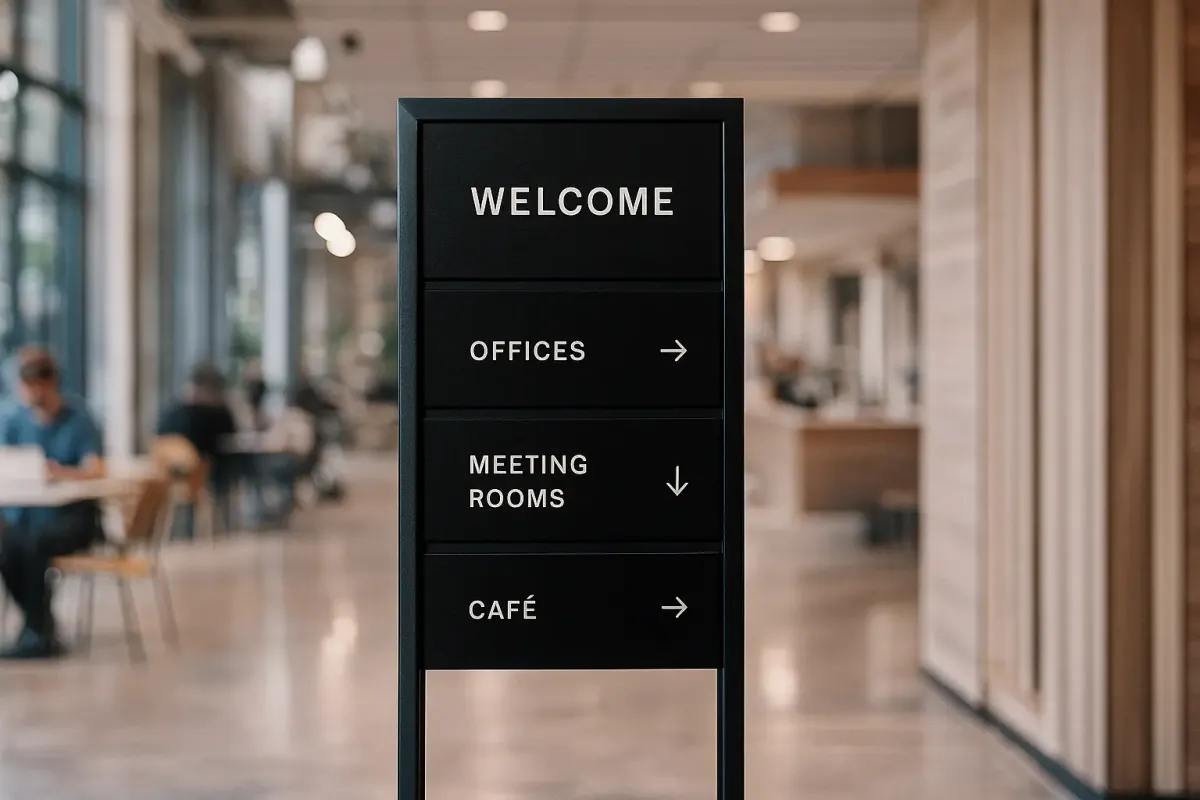Unlocking Internal Linking SEO Benefits

Mastering Internal Linking for SEO Benefits
I used to think of an internal link as a chore. A final, box-ticking step before hitting publish. Find a few old posts, sprinkle in some internal links and call it a day. It felt arbitrary. And because of that, its impact was too.
It wasn’t until I started treating internal linking as a system a deliberate architecture for the entire site that I saw how foundational it is. Effective internal linking for SEO isn’t about adding random links; it’s about building pathways. Internal links are hyperlinks that point to another page on your site. They improve site navigation, guide users to what they need next, and show the search engine how your content connects, creating a better user experience and a whole that’s far stronger than its parts.
Get this system right, and every new page you publish inherits strength from the ones that came before. Internal links pass authority and link equity to other pages. It’s one of the few SEO tactics that give you complete control. Unlike external links, you don’t need outreach or luck just you, your website’s internal linking structure and a solid internal linking strategy.

Why Internal Linking Matters for SEO
The real SEO benefits of internal linking come down to three things: distributing authority, creating topical context, and managing how search engines crawl your site.
First, authority. Think of your popular articles, the ones with backlinks and traffic as reservoirs of PageRank. An internal link is a pipe from that reservoir to other relevant internal pages. A link that points to another page passes value. When we launch a new page, my linking strategy involves finding powerful blog posts and adding internal links from them to the new page. These links help search engines and send a signal of trust and authority. After implementing this systematic linking strategy, we saw indexing speed for new content improve from over 48 hours to under 12 hours.
Second, context. Search engines don’t just read keywords; they build a conceptual map. Internal links connect related concepts. A strong internal linking structure clarifies that map. We use a topic cluster model as part of our content strategy. For our “AI Marketing” pillar, we have a dozen smaller articles. Each of these cluster posts contains contextual links back to the central pillar. These contextual internal links tell Google that our expertise is deep, which helps improve user experience. Google follows links to discover depth.
Finally, crawl budget. Google only has so much time to spend on a site. Issues like broken links or redirect chains waste it. A clean site structure with logical navigational links guides crawlers to your most valuable content first. Internal links help Google find and crawl more efficiently, which is important for SEO performance.
Creating a Logical Internal Link Structure
Randomly adding internal links is better than nothing, but a logical internal linking structure is where the real leverage is. A well-planned site structure is foundational to a successful SEO content strategy.
For our blog, the pillar-and-cluster model is the blueprint:
- Pillar Pages: Comprehensive guides on a broad topic.
- Cluster Content: Specific articles that dive deep into one section of the pillar page.
The linking rule is simple: every cluster post links up to the pillar page with contextual links. The pillar page links out to important cluster posts. This creates a clear, hierarchical flow of traffic and authority, improving navigation, link value, and user experience.
I map this out visually before writing. I use Whimsical to draw the pillar page as a hub and the clusters as spokes. This makes it easy to include internal links systematically.
Visualizing the Pillar-and-Cluster Model
[ Pillar Page: The Ultimate Guide to AI Marketing ]
|
|---> [ Cluster Post: AI for Content Creation ]
|---> [ Cluster Post: GPT-4 Prompting for Marketers ]
|---> [ Cluster Post: Analysing Data with AI ]
|---> [ Cluster Post: AI Email Marketing Tools ]
This map prevents orphan pages, ensures many internal links point to key assets, and avoids a situation where a page you’re linking sits isolated without any internal connections.

Linking Strategies Beyond the Blog
A comprehensive internal linking strategy must include all content types, keeping best practices and strategies in mind.
- From Blog Posts to Product PagesInstead of generic anchor text, add internal links with contextual, value-driven phrases. In an article on productivity, a link to a project management tool could be, “you can track progress with an automated task board.” These links help search engines and bridge educational content with a solution.
- Between Product and Feature PagesInternal links can also connect related features. These links are important for user discovery and for showing search engines how your product solves a larger problem. Internal and external links together create a balanced site structure.
- From Help Documentation to Feature PagesA help doc is high-intent. Add links to another page your feature or product page directly in context. These internal linking opportunities leverage authority and boost your SEO.
Maximising SEO Value from Internal Links
Once the site structure is in place, the details of each internal link start to matter. The anchor text you use, where links are placed and the number of links per page can all change their value.
- Anchor Text: Vary anchor text for internal links. Instead of repeating “SEO tools,” use phrases like “anchor text for internal navigation” or “tools to improve your SEO ranking.” This improves your SEO and feels natural.
- Placement: Links at the top of a web page carry more link equity than footer links. Links on that page early on are stronger.
- Quantity: My rule is 3–5 highly relevant links per 1,000 words. The number of internal links should reflect usefulness. Many links can dilute value, but links should be used where they add genuine navigation.
Internal links aren’t just for algorithms; they’re for users. Creating internal links with best practices in mind improves both SEO ranking and user journeys.
Case Study: Launching a New Feature Page
Here’s how we use internal linking to launch a new feature page:
- Identify Power Pages – Use Ahrefs to check the internal linking structure to boost rankings. Add internal links from your most authoritative articles.
- Anchor Strategy – For each linked page, plan unique anchor text. Internal links a page uses should vary but remain contextual.
- Add Links – Add internal links systematically. A link that points to another page passes value via internal links.
- Measure – Track how many links point to the new page and watch its SEO performance.
This shows how creating an effective internal linking strategy and creating internal links can rapidly boost your SEO.

Avoiding Common Internal Linking Mistakes
Even with strong linking strategies, internal linking issues can undermine progress. Common internal linking mistakes include:
- Broken Internal Links: A broken link is a dead end. Run a monthly internal link audit with Screaming Frog. Fix issues like broken links fast.
- Orphan Pages: Internal links pointing to orphan pages are missing. Links help search engines discover them. Internal links are essential to fix this.
- Redirect Chains: Links work best when direct. External links point straight to a destination, and internal links should too. Best to link directly rather than through chains.
- Anchor Cannibalisation: Don’t let many links with the same anchor text split relevance. Keep one page mapped to each keyword.
Common internal linking mistakes often come from skipping audits. Links pass value only if maintained. Internal links help Google crawl your site efficiently.
A Quick Internal Linking Audit Checklist
- [ ] Audit and fix broken internal links (404s).
- [ ] Hunt for orphan pages and connect them with new internal links.
- [ ] Eliminate redirect chains
- [ ] De-cannibalise anchor text
- [ ] Add internal links to important pages with too few connections.
Internal links connect your content, and internal links are crucial for SEO. Internal links are hyperlinks that point users and crawlers where you want them to go. Internal links can also pass authority, and links help search engines interpret your content.
Tools and Plugins for Effective Internal Linking
Managing many links manually is tough. Internal linking efforts scale better with tools:
- Crawlers: Screaming Frog for internal link audit and finding broken links.
- Search Operators: site:domain.com queries help Google surface linking opportunities.
- AI Assistance: GPT-powered scripts can suggest contextual internal links.
- Plugins: Link Whisper on WordPress recommends links per article. Always review suggestions—links should be used with best practices in mind.
FAQs
What role does internal linking play in SEO?
Internal linking helps distribute PageRank, establish topical authority, and guide crawlers. Internal links are essential for helping a search engine understand your site. Internal links help Google find and index new content quickly.
What are the types of internal links?
There are several types of internal links: navigational links in menus, contextual links in content, and footer links. Internal links a page contains should be intentional.
How do internal and external links work together?
Internal and external links both provide value. Internal links pass equity within your site, while external links point in from other domains. Keeping internal and external links balanced is important for SEO.
What are internal linking best practices?
Follow internal linking best practices: create a strong internal linking structure, map keywords to one page, keep number of links per page reasonable, and avoid nofollow links unless necessary.
Closing Thoughts
Creating an effective internal linking strategy isn’t about gaming algorithms. It’s about building a website’s internal linking structure to boost navigation, distribute link equity and improve your SEO. Internal links are crucial. They’re the connective tissue of your site. Internal links are essential, and when you create a strong internal linking system with best practices in mind, links important to your business will thrive.
Links on a page should add value. Internal links pass authority. Internal links help Google crawl. Internal links connect your content. And internal linking helps you improve your SEO ranking.
written by Natalie – your AI SEO content assistant
